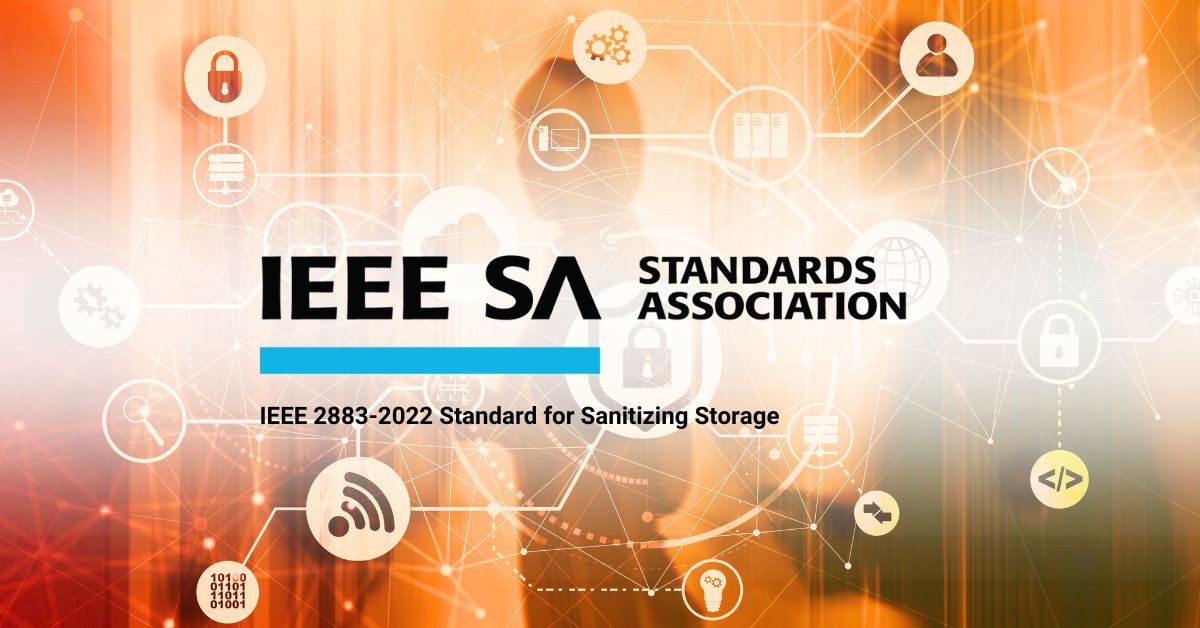In today’s digital age, data security is of utmost importance, necessitating robust data management strategies. Central to this is media sanitization, which ensures the secure and irreversible removal of sensitive data. With the shifting landscape of data storage, the IEEE 2883-2022 Standard has become a significant reference in this field. The Institute of Electrical and Electronics Engineers, known as IEEE, plays a pivotal role in crafting new standards, spanning areas from sanitization and nanotechnology to AI, via its Standards Association. In line with this dedication, IEEE’s latest standards highlight non-destructive data sanitization methods, advocating for more sustainable hardware life cycles.
The Growing Importance of Data Sanitization
As technology continues to evolve, so does our dependence on data. From financial transactions and medical records to personal messages and photographs, vast amounts of data are generated daily. Ensuring the security and privacy of this data has never been more critical. As such, organizations are investing heavily in media sanitization technologies and standards to keep their sensitive information out of the wrong hands. Organizations prioritize this investment for several reasons:
- To protect their brand
- To meet legal and compliance mandates and avoid fines
- To support the circular economy by reusing IT rather than shredding or destroying it
Why the IEEE 2883-2022 Standard Matters
Recognized officially as the IEEE Standard for Sanitizing Storage (IEEE 2883-2022), it serves as a roadmap for securely erasing data on new storage technologies that emerged after the National Institute of Standards and Technology (NIST) unveiled its NIST Special Publication 800-88, Rev. 1, back in 2014.
Even though NIST 800-88 remains a beacon for data erasure across the globe, technological leaps since its debut nearly ten years ago have left a void. The creation of new storage devices is outpacing current standards. This is where IEEE 2883-2022 steps in. Particularly, it throws a spotlight on SATA, SCSI, and NVMe drives — offering a much-needed guide for securely sanitizing these now-common storage solutions.
Key features of IEEE 2883-2022
- Clarity: The standard presents unequivocal directives, helping organizations to discern if they’ve met data sanitization benchmarks.
- Varied Methodologies: It offers nuanced distinctions about different data destruction techniques by media and sanitization type.
- Integration: The potential to weave into other benchmark documents, like future NIST or ISO standards, ensuring cutting-edge sanitization techniques keep pace with advancing technology.
Sanitization: A Glimpse into IEEE 2833’s View
Data governance is crucial for organizations, with sanitization at its core. This process deals with the handling of varied data types, from personal information and financial records to intellectual property.
Key elements, as per IEEE, include:
- Data Sanitization: Eliminating stored data, including that within cloud services, apps, and virtual environments.
- Storage Sanitization: Targeting data within ICT infrastructure, such as NAS systems and cloud storage.
- Media Sanitization: Focusing on storage devices or media.
Sanitization Techniques as per IEEE 2883-2022
The IEEE standard defines three primary sanitization methods:
- Clear Sanitization: This involves logical techniques, making it suitable for low-sensitivity data. Techniques include overwrite and block erase.
- Purge Sanitization: A combination of logical and physical methods, making it impossible to recover data. Techniques range from overwrite and block erase to cryptographic erase and degaussing.
- Destruct Sanitization: This method destroys the storage device, including methods like incineration and melting.
Choosing the right sanitization method depends on the data’s security level, with the severity of potential impact guiding the choice.
Diving Deeper: Clear & Purge Techniques
Each sanitization method serves specific needs:
Overwrite: This method replaces target data with random patterns, rendering the storage media reusable.
Block Erase: Executed via format or sanitize commands, this technique can wipe significant storage areas in one go.
Cryptographic Erase: For storage media containing encrypted data, changing or sanitizing the encryption key ensures only encrypted text remains.
Degaussing: This purging method uses a degausser device, creating a strong magnetic field that sanitizes magnetic storage media.
Verification: Ensuring Data is Truly Gone
Post-sanitization, verifying the process is crucial. Verification assesses the results, ensuring thorough data erasure,highlighting any anomalies, and satisfying audit and compliance checks.
The Role of International Standards
As businesses and individuals grapple with the nuances of data security, international standards like IEEE 2883-2022 are invaluable. They offer a consistent and standardized approach to the process, ensuring data erasure methods are both effective and efficient. By adhering to these standards, organizations can demonstrate a commitment to data privacy and gain the trust of clients, customers, and stakeholders.
Challenges in Modern Data Erasure
Modern storage devices present their own unique challenges. Data can reside in various locations on these devices, often hidden or difficult to access. Effective sanitization requires a deep understanding of these intricacies, further underscoring the importance of standards like IEEE 2883-2022.
As data becomes increasingly integral in our digital world, ensuring its secure handling and destruction is paramount. The IEEE 2883-2022 Standard provides organizations with a comprehensive guide to handle these data challenges effectively.

